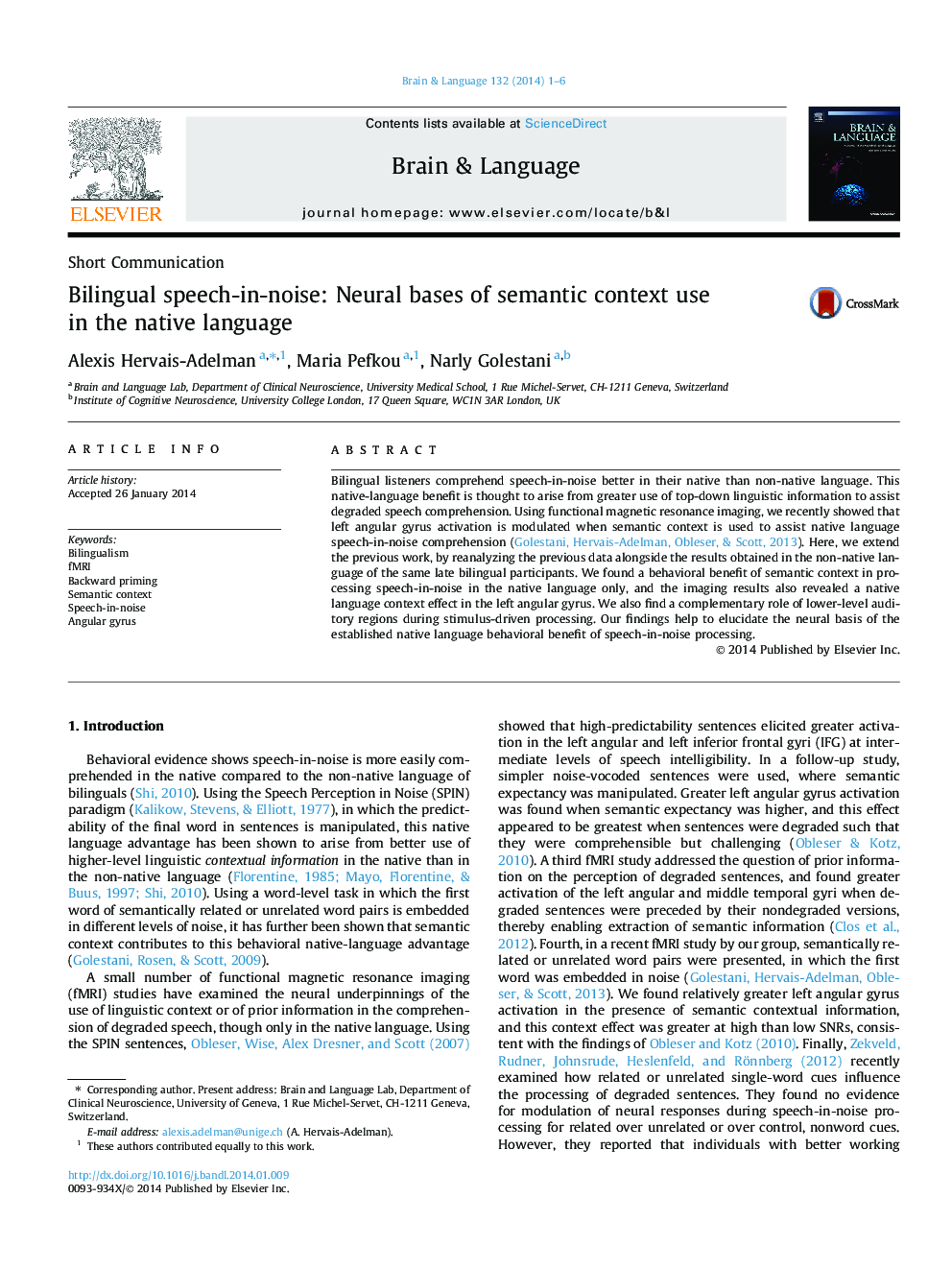| Article ID | Journal | Published Year | Pages | File Type |
|---|---|---|---|---|
| 7284868 | Brain and Language | 2014 | 6 Pages |
Abstract
Bilingual listeners comprehend speech-in-noise better in their native than non-native language. This native-language benefit is thought to arise from greater use of top-down linguistic information to assist degraded speech comprehension. Using functional magnetic resonance imaging, we recently showed that left angular gyrus activation is modulated when semantic context is used to assist native language speech-in-noise comprehension (Golestani, Hervais-Adelman, Obleser, & Scott, 2013). Here, we extend the previous work, by reanalyzing the previous data alongside the results obtained in the non-native language of the same late bilingual participants. We found a behavioral benefit of semantic context in processing speech-in-noise in the native language only, and the imaging results also revealed a native language context effect in the left angular gyrus. We also find a complementary role of lower-level auditory regions during stimulus-driven processing. Our findings help to elucidate the neural basis of the established native language behavioral benefit of speech-in-noise processing.
Related Topics
Life Sciences
Neuroscience
Biological Psychiatry
Authors
Alexis Hervais-Adelman, Maria Pefkou, Narly Golestani,
